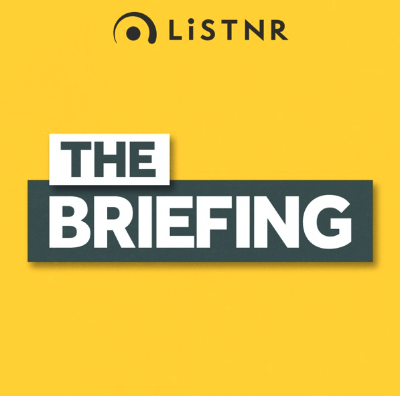Blog
Key takeaways from the Future of Measurement webinar
Our recent webinar explores what the future of measurement in 2026 looks like and what brands must do to scale in this AI era.
The Australian podcasting news industry continues to grow. While Australian audiences do consume content from international brands like the BBC, they also exhibit strong affinity for independent Australian productions over mainstream sources. In a period of uncertainty amidst Apple’s recent update to automatic download policies Australia’s podcast audience has rapidly expanded, with ad revenue rising from $5 million in 2017 to over $100 million in 2024. So how do podcasts fit into the Australian news cycle? As audiences direct attention to independent and international productions, audience targeting, partnerships and media monitoring trends indicate a shift and a need to adapt engagement metrics and messaging strategy.
To highlight the impact of podcasts on audience engagement, we tracked coverage of key news themes in Australian podcasting from January 2020 to November 2024.
Podcasts surged into the mainstream during the pandemic, and they’re now evolving by integrating with platforms like video and audiobooks to meet new audience expectations.
While general podcast news discussion remains steady, discussion on news podcasts indicates listener engagement peaks around high-impact stories, suggesting that the topic and information itself is what truly resonates with audiences. Outlets like The Australian Financial Review and ABC have expanded into the format, yet even major programs like ABC’s Background Briefing face fluctuating engagement compared to discussion about news content being consumed through podcasts. The data suggests there’s a gap being left by main outlets in the podcasting space. While traditional media adapts, independent producers are gaining traction with stories that deeply resonate on identity and community issues, such as the 2021 Christian Porter case and The Briefing’s 2024 episode on pianist Jayson Gillham’s lawsuit against the Melbourne Symphony Orchestra. Understanding audience preferences and monitoring content trends helps communicators craft strategies that leverage podcasting’s unique appeal.
Podcasts offer creators the freedom to pursue stories with fewer constraints of advertisers, investors, or other stakeholders, leading to content deeply shaped by personal passion and a strong connection to the subject. This independence empowers impactful storytelling, as illustrated by The Teacher’s Pet, where Hedley Thomas’s rigorous reporting on the case of Lynette Dawson uncovered new, critical details and underscored the journalistic integrity driving audience engagement in a shared pursuit of truth. Similarly, New Politics, co-created by Eddy Jokovich, leverages its Patreon-funded model to explore perspectives outside mainstream narratives, showcasing the power of independent journalism through podcasting.
Sports and entertainment tend to generate high visibility and engagement, suggesting they benefit from a faster publishing cadence and broad appeal. However issues like global conflicts draw significant attention, especially among communities directly impacted. The Briefing podcast, for example, addressed the October 2024 conflict in Gaza in a recent episode where Lebanese-Australian journalist Liz Deep-Jones offered a personal perspective. This type of coverage shows how podcasts can provide both journalistic depth and emotional resonance, connecting listeners to complex stories in a more relatable way.
Even if a major broadcaster or outlet owns a podcast production, the unique style and tone set by the hosts and production team often place podcasts outside the conventional PR and communications scope. Unlike the carefully curated talking points found in a typical puff piece or advertorial, podcasts allow for candid, in-depth discussions that explore complex topics with a degree of freedom seldom found in traditional news media channels. This authenticity is driven by the podcast format itself, which favours nuanced discussion offering audiences a more transparent and less scripted narrative style.



Many of the leading news podcasts, like The Quicky by Mamamia, follow a daily release that taps into the rhythm of the 24-hour news cycle, providing timely responses to breaking news. This format appeals to listeners by delivering news in a quick, digestible style, ideal for staying informed on the go and catering to audiences prioritising both convenience and relevance. It’s no surprise, then, that top news highlight podcasts often incorporate ads at multiple points—before, during, and after episodes—capitalising on the high listener engagement these accessible, on-the-go updates create.
Sports and entertainment podcasts tend to attract higher engagement with frequent, easily digestible episodes, often in the preferred 20-30 minute range, which sustain a steady listener base. Personalities like Hamish and Andy, and John Graham exemplify how audience visibility can be driven more by engaging personalities than by traditional news analysis. In contrast, outlets like The Australian Financial Review maintain a more analytical focus with podcasts such as The Fin and Chanticleer, known for their conservative, business-centric tone. Meanwhile, digital-first brands like Mamamia take a more hybrid, accessible approach across varied topics, leveraging podcasting to reach broader audiences and foster engagement with impactful news stories. This range of formats illustrates how different brands tailor their podcast strategies to meet audience preferences, from rapid updates in entertainment to in-depth discussions on current events.
While legacy media outlets leverage their reputations to enhance their podcast presence, credibility alone doesn’t ensure engagement. Instead, PR and communications teams can boost audience connection by aligning content with listeners’ interests and authenticity, helping refine podcasting strategies to capture attention and drive meaningful engagement.
Interested in learning more? Email us at info@isentia.com
Loren is an experienced marketing professional who translates data and insights using Isentia solutions into trends and research, bringing clients closer to the benefits of audience intelligence. Loren thrives on introducing the groundbreaking ways in which data and insights can help a brand or organisation, enabling them to exceed their strategic objectives and goals.
Get in touch or request a demo.